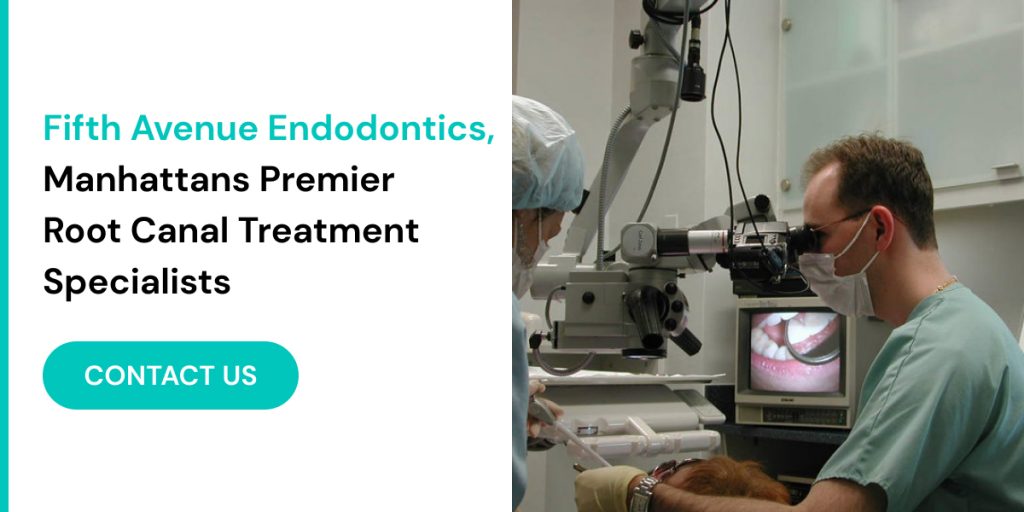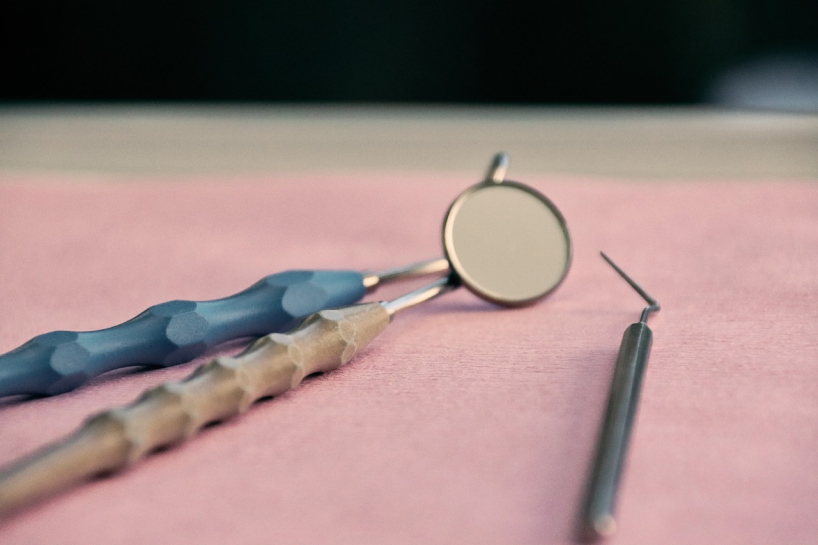Introduction
In the realm of endodontics, root canal surgery stands as a cornerstone procedure for salvaging compromised teeth, addressing deep-seated infections within the tooth’s pulp. Despite its effectiveness, certain cases present challenges beyond standard treatment modalities. Extensive decay or trauma can severely weaken the tooth’s structure, compromising not only its functionality but also the surrounding bone support. In such complex scenarios, the integration of bone grafting becomes pivotal. This adjunctive procedure aims not only to eradicate infection but also to restore lost bone mass, ensuring the tooth’s long-term stability and overall oral health.
Dr. Iofin at Fifth Avenue Endodontics emphasizes the importance of a comprehensive approach to treatment, where the synergy between root canal treatment and bone grafting offers patients a chance to preserve their natural teeth effectively. By addressing both the infection within the tooth and the structural integrity of the surrounding bone, this combined approach enhances treatment outcomes, minimizes risks of future complications, and supports optimal oral function.
Understanding Root Canal Treatment
Root canal treatment, often termed endodontic therapy, is a specialized procedure designed to treat infections deep within the tooth’s pulp—a complex network of nerves, blood vessels, and connective tissue housed within the root canal system. When bacteria invade this inner sanctum, typically due to severe decay, trauma, or untreated cavities, they can cause inflammation, pain, and ultimately, threaten the tooth’s viability.
Dr. Iofin, renowned at Fifth Avenue Endodontics for his expertise in endodontics, underscores the critical role of Manhattan root canal treatment in preserving natural teeth. By meticulously removing infected tissue and cleansing the root canals, Dr. Iofin effectively halts the spread of infection and alleviates discomfort. This procedure not only saves the tooth from extraction but also promotes healing and restores oral health.
Root canal surgery is often misunderstood as a painful or unnecessary procedure. However, it is a vital intervention that can prevent further complications such as abscess formation or the spread of infection to neighboring teeth and tissues. Dr. Iofin’s approach at Fifth Avenue Endodontics combines advanced techniques with compassionate care, ensuring that patients receive tailored treatment plans that prioritize comfort and long-term dental health.
In cases where the tooth’s structure is compromised by extensive decay or trauma, root canal therapy alone may not suffice. This is where the integration of adjunctive treatments like bone grafting becomes crucial, ensuring comprehensive restoration of both the tooth and its supporting bone. By addressing these complexities, Dr. Iofin and his team strive to provide patients with lasting solutions that preserve their natural smiles and enhance overall well-being.
For more insights into root canal surgery or to schedule a consultation with Dr. Iofin at Fifth Avenue Endodontics, contact our office today. Your dental health deserves expert care and attention.
When Bone Grafting Comes into Play
While Manhattan root canal treatment serves as a highly effective method for eliminating infections within the tooth, certain severe cases can adversely affect the surrounding bone structure. Chronic infections, traumatic injuries, or extensive decay can significantly weaken the bone’s capacity to support the tooth following treatment. In these complex scenarios, Dr. Iofin frequently advises the inclusion of bone grafting as an essential adjunctive procedure.
Bone grafting involves the placement of biocompatible materials into the affected area to stimulate new bone growth and enhance the jawbone’s strength and integrity. At Fifth Avenue Endodontics, Dr. Iofin ensures that each bone grafting procedure is meticulously tailored to meet the specific needs of the patient. By fortifying the jawbone, this procedure not only supports the treated tooth but also provides a stable foundation for long-term dental health.
The decision to recommend bone grafting alongside root canal therapy is guided by several factors, including the extent of bone loss, the nature of the infection or injury, and the overall oral health goals of the patient. By addressing these underlying issues comprehensively, Dr. Iofin aims to optimize treatment outcomes, minimize the risk of future complications, and promote the preservation of natural teeth.
Patients undergoing combined root canal therapy and bone grafting at Fifth Avenue Endodontics can expect personalized care that prioritizes both functional and aesthetic concerns. This integrated approach not only restores oral health but also enhances the longevity of the treated tooth and surrounding bone structure. For individuals facing complex dental challenges, Dr. Iofin’s expertise ensures that each treatment plan is designed to achieve optimal results and support a healthy, confident smile.
To learn more about the role of bone grafting in root canal procedures or to schedule a consultation with Dr. Iofin, contact Fifth Avenue Endodontics today. Your dental wellness is our priority, and we are committed to delivering exceptional care tailored to your unique needs.

Indications for Bone Grafting
Bone grafting plays a crucial role in addressing various conditions where the integrity of the jawbone surrounding a tooth is compromised. Understanding the specific indications for bone grafting can shed light on its importance in conjunction with root canal therapy:
- Advanced Infection: Persistent infections within the tooth can extend into the surrounding bone, leading to deterioration and loss of bone mass. In such cases, bone grafting becomes necessary to replenish and strengthen the affected area, supporting the tooth’s stability and overall oral health.
- Traumatic Injuries: Teeth subjected to significant trauma, such as accidents or sports injuries, can result in fractures or damage that extends into the bone. Bone grafting is essential in these scenarios to provide structural reinforcement and facilitate proper healing of both the tooth and surrounding bone tissue.
- Extensive Decay: Teeth affected by severe decay may weaken the surrounding bone, compromising its ability to support the tooth adequately. Bone grafting helps restore the bone’s integrity post-treatment, ensuring sufficient structural support for the tooth and enhancing the long-term success of root canal therapy.
At Fifth Avenue Endodontics, Dr. Iofin evaluates each patient’s unique situation to determine whether bone grafting is necessary alongside root canal treatment. By addressing these underlying conditions comprehensively, Dr. Iofin aims to preserve natural teeth, promote healing, and prevent future complications. Patients can expect personalized care that prioritizes optimal oral health outcomes and restores confidence in their smiles.
For more information on bone grafting and its role in enhancing root canal procedures, or to schedule a consultation with Dr. Iofin, contact Fifth Avenue Endodontics today. Our commitment to excellence ensures that you receive the highest standard of care tailored to your individual needs.
The Bone Grafting Procedure
At Fifth Avenue Endodontics, the bone grafting procedure is a meticulous process designed to restore and strengthen the jawbone following root canal treatment. Dr. Iofin employs advanced techniques to ensure optimal outcomes for patients requiring additional support for compromised bone structure.
Preparation and Placement
The procedure begins with thorough preparation of the treatment site. Dr. Iofin carefully cleans and disinfects the affected area surrounding the tooth, ensuring a sterile environment conducive to healing. This initial step is crucial in removing any residual infection and creating a favorable foundation for the grafting material.
Next, a biocompatible grafting material is selected based on the patient’s individual needs. This material can be sourced from several options, including the patient’s own body (autograft), a donor (allograft), or synthetic substitutes (alloplast). The choice of grafting material depends on factors such as the extent of bone loss, patient health considerations, and treatment goals.
Promoting Bone Regeneration
Once prepared, the grafting material is carefully placed into the cleaned and disinfected site. This material serves as a scaffold that supports the growth of new bone tissue over time. It encourages the body’s natural healing process by stimulating osteogenesis (bone formation) and osteoconduction (bone growth along the graft).
Dr. Iofin ensures that the grafting material is securely positioned to provide structural support and enhance the stability of the treated tooth. This step is critical in fortifying the jawbone and restoring its ability to support the tooth effectively.
Long-Term Benefits
The integration of bone grafting with root canal treatment offers numerous benefits that extend beyond immediate healing:
- Preservation of Natural Teeth: By addressing both the infection within the tooth and the surrounding bone loss, patients can retain their natural dentition with enhanced structural support. This preservation helps maintain oral function and aesthetics, promoting overall dental health.
- Improved Longevity: Strengthening the bone around treated teeth reduces the risk of future complications such as tooth loss or further bone deterioration. This enhancement in structural integrity ensures sustained oral health and functionality over the long term.
- Cosmetic Considerations: Maintaining adequate bone volume is crucial for supporting aesthetic outcomes. It provides a stable foundation for options like dental implants if restoration or replacement of missing teeth becomes necessary in the future. Patients benefit not only from restored function but also from a natural-looking smile that boosts confidence.
The bone grafting procedure at Fifth Avenue Endodontics represents a vital component of comprehensive dental care for patients undergoing root canal treatment. Dr. Iofin’s expertise ensures that each procedure is tailored to meet the specific needs of the patient, promoting optimal healing and long-term oral health.
By combining advanced techniques with personalized care, Dr. Iofin and his team strive to deliver exceptional outcomes that preserve natural teeth, enhance structural support, and promote overall well-being. For individuals seeking comprehensive dental solutions in Manhattan, Fifth Avenue Endodontics offers expertise, compassion, and a commitment to excellence.
To learn more about the benefits of bone grafting in conjunction with root canal treatment, or to schedule a consultation with Dr. Iofin, contact Fifth Avenue Endodontics today. Your smile deserves the very best care, and we are here to provide it.

Conclusion
In conclusion, root canal surgery stands as a crucial procedure for saving teeth affected by infection or trauma. However, in cases where the surrounding bone structure is compromised, the addition of bone grafting becomes essential for comprehensive treatment and lasting results. Dr. Iofin and the dedicated team at Fifth Avenue Endodontics emphasize a personalized approach that combines these advanced techniques to ensure optimal outcomes for each patient.
By integrating root canal surgery with bone grafting, Fifth Avenue Endodontics not only addresses immediate dental concerns but also promotes long-term oral health and stability. Patients can benefit from preserved natural teeth, enhanced bone support, and reduced risks of future complications.
For more information on how root canal surgery and bone grafting can benefit you or to schedule a consultation with Dr. Iofin, contact Fifth Avenue Endodontics today. Your dental wellness is our priority, and we are committed to providing exceptional care tailored to meet your individual needs.

